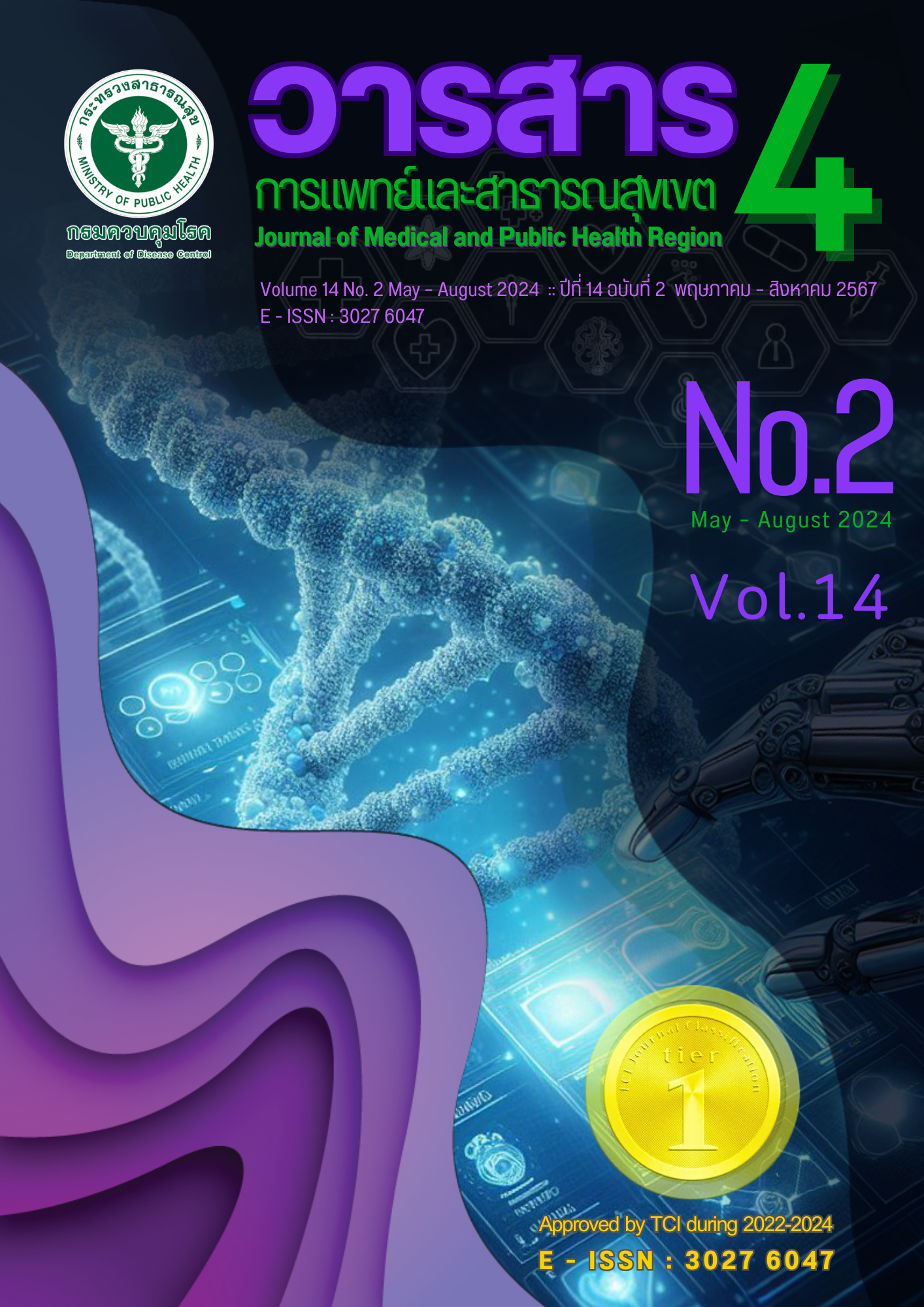A comparison of Normal Saline and Ringer’s lactate solution for fluid resuscitation and mortality rate in adult patients with sepsis and septic shock in Nakhon Nayok Hospital
Main Article Content
Abstract
Sepsis and Septic Shock are critical conditions in hospitals. It is a common condition found in hospitals. It is also a significant problem in the public health system because it has a high mortality rate and is the primary cause of death worldwide, even in Nakhon Nayok Hospital, where the researcher works. Practice that is popular and accepted all over the world is the Surviving Sepsis Campaign, which found that giving fluids to maintain a standard circulatory system is the main factor and essential factor in reducing the mortality rate of Sepsis patients. However, there is still a debate about the most suitable fluid for resuscitation in Sepsis patients. The researcher collected medical records from patients diagnosed with sepsis/severe sepsis/septic shock and admitted to Nakhon Nayok Hospital. In the period from Jan. 2021 - May 2023. Recorded type of fluid for resuscitation NSS or RLS, the fluid volume in 1 hour after diagnosis. Comparison of mortality rate, the incidence of renal failure at the end of treatment and 30 days after treatment, and length of stay in the Hospital between two groups of patients who received NSS or RLS. The mortality and acute renal failure rates after treatment between the NSS and RLS groups in Sepsis/Septic shock in Nakhon Nayok Hospital differed. However, the length of stay at Nakhon Nayok Hospital was different. The RLS group had a more extended hospital stay than the NSS group.
Article Details

This work is licensed under a Creative Commons Attribution-NonCommercial-NoDerivatives 4.0 International License.
References
Paoli CJ, Reynolds MA, Sinha M, Gitlin M, Crouser E. Epidemiology and Costs of Sepsis in the United States–An Analysis Based on Timing of Diagnosis and Severity Level. Critical Care Medicine 2018; 46(12): 1889–97.
Inspection Guideline 2018. Service Plan; Medicin. Ministry of Public Health; 2018. (in Thai)
Rivers E, Nguyen B, Havstad S, Ressler J, Muzzin A, Knoblich B, et al. Early goal–directed therapy in the treatment of severe sepsis and septic shock, N Engl J Med 2001; 345(19): 1368–77.
Evans L, Rhodes A, Alhazzani W, Antonelli M, Coopersmith CM, French C. et al. Surviving Sepsis Campaign: international guidelines for management of severe sepsis and septic shock:2012. Crit Care Med 2013; 39(2): 165–228.
Rory Spiegel, MD; Joshua D. Farkas, MD; Philippe Rola, MD; Jon–Emile Kenny, MD. The 2018 Surviving Sepsis Campaign’s Treatment Bundle. Ann Emerg Med. 2019; 73: 356–8.
Winters ME, Sherwin R, Vilke GM, Wardi G.J Emerg Med. What is the Preferred Resuscitation Fluid for Patients with Sepsis and Septic Shock?, 2017; 53(6): 928–39.
Brown RM, Wang L, Coston TD, Krishnan NI, Casey JD, Wanderer JP, et al. Balanced Crystalloids versus Saline in Sepsis A Secondary Analysis of the SMART Clinical Trial. American Journal of Respiratory and Critical Care Medicine 2018; 200(12): 1487–95.
Zampieri FG, Machado FR, Biondi RS, et al. Effect of intravenous fluid treatment with a balanced solution vs 0.9% saline solution on mortality in critically ill patients: the BaSICS randomized clinical trial. JAMA 2021; 326: 818–29.
Semler MW, Self WH, Wanderer JP, Ehrenfeld JM, Wang L, Byrne DW, et al. Balanced Crystalloids versus Saline in Noncritically Ill Adults. N Engl J Med 2018; 378(9): 829–39.
Makris K, Spanou L. Acute Kidney Injury: Diagnostic Approaches and Controversies. Clin Biochem Rev. 2016; 37(4): 153–75.


